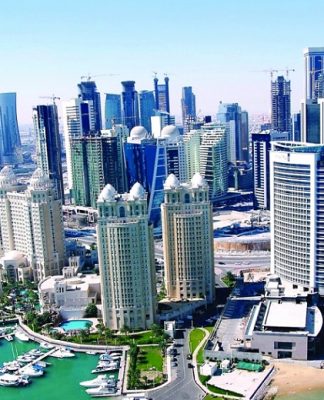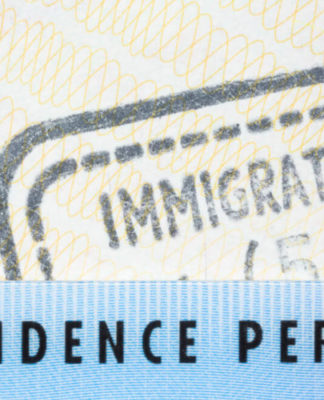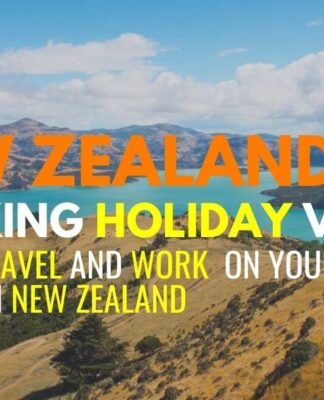Dr. Amy Liepert talks to Hector Almeida Gil, who fell from the border wall separating the United States and Mexico, as he recovers at UC San Diego Medical Center on April 28, 2022. (Photo: Eric Thayer for The Washington Post via Getty Images)
‘Absolutely Tragic’: Doctors Tie Trump’s 30-Foot Border Wall to Surge in Injuries and Deaths
Doctors in Southern California are connecting former President Donald Trump’s efforts to build a U.S.-Mexico border wall that “can’t be climbed” with soaring rates of serious injuries and deaths among migrants.
“We had come to save our lives, not to risk them in such an awful way.”
Seven physicians at the University of California, San Diego detailed new statistics and their observations about local trauma cases in a research letter published Friday in the journal JAMA Surgery.
Under Trump, a 30-foot wall was installed across more than 400 miles, often replacing shorter barriers. The doctors focused on admissions to their trauma center after the new wall went up in California’s Imperial and San Diego Counties.
Before the higher barrier was built, “there were 67 fall admissions from the border wall compared with 375 during the after period,” the letter states, explaining that “this increase of more than five times is still significant” when the doctors factor in average apprehensions by U.S. immigration officials.
After the wall was raised, there was also a jump in deaths—from zero to 16.
“Once you go over 20 feet, and up to 30 feet, the chance of severe injury and death are higher,” Dr. Jay Doucet, chief of the trauma division at UC San Diego Health, told The Washington Post. “We’re seeing injuries we didn’t see before: pelvic fractures, spinal cord injuries, brain injuries, and a lot of open fractures when the bone comes through the skin.”
As the newspaper reported:
At Scripps Mercy Hospital, the other major trauma center for the San Diego area, border wall fall victims accounted for 16% of the 230 patients treated last month, a higher share than gunshot and stabbing cases, according to Vishal Bansal, the director of trauma.
“I’ve never seen anything like this,” Bansal said in an interview. “This is crazy.” His trauma ward treated 139 border wall patients injured by falls last year, up from 41 in 2020.
Hector Almeida, a 33-year-old dentist from Cuba who was sent to UC San Diego Health after fracturing his left leg Monday, told the Post that “I never expected we would have to climb the wall.”
According to the paper, “Smugglers led his group to the wall with a ladder and told them to climb up and slide down the other side, said Almeida, who said he saw one woman fall and break both legs, and an older man with a severe head injury.”
The San Diego Union-Tribune shared what happened to a Mexican family trying to flee drug cartel violence after they were turned away by U.S. officials under the Title 42 policy while seeking asylum at the San Ysidro Port of Entry:
On a foggy night in mid-March, several family members from the Mexican state of Michoacán followed smugglers’ instructions to climb the first of two border barriers to reach U.S. soil near San Diego.
One of the women felt her grip slipping on the first fence from the moisture in the air as she struggled over. When she approached the second wall, looming 30 feet above her, she realized it would be impossible for her to get over safely. As she panicked, the smugglers told her to wait to the side for Border Patrol to get her so that other migrants could cross.
It was only after she reached the Border Patrol station that she learned that her 14-year-old daughter, whom the smugglers sent with an earlier group, had fallen from the 30-foot wall.
“It was the worst night of my life,” said the woman, whose daughter remains mostly bedridden after spending a week in the hospital with a fractured skull, neck, and back. “We had come to save our lives, not to risk them in such an awful way.”
Along with the human impact, the rise in falls has taken a financial toll. The letter notes that “the increased hospital costs of the surge in admissions exceeded $13 million in 2021 dollars.”
The surge also coincided with the Covid-19 pandemic, which has strained the U.S. healthcare system, the paper points out, adding:
The care of these injured immigrants is not only a humanitarian problem but also a public health crisis that further worsened trauma center bed capacity, staff shortages, and professionals’ moral injury. Most of these patients had significant brain and facial injuries or complex fractures of the extremities or spine, with many requiring intensive care and staged operative reconstructions. Lack of health insurance made most patients ineligible for rehabilitation facilities or post-discharge physical therapy, further lengthening prolonged hospital stays.
“This isn’t a fracture you get when you fall off your bike, and you get a cast on it,” Dr. Amy Liepert, medical director of acute care surgery at UC San Diego Medical, told the Union-Tribune. “These are bones broken in multiple pieces that need to be pinned back together, sometimes with external fixation devices.”
The letter says that the Title 42 policy enabling U.S. officials to swiftly expel many migrants like the family from Michoacán “may have increased the numbers and desperation of persons crossing the border away from ports of entry and increased the number of falls.”
The Title 42 policy was implemented under Trump and continued under Biden, who plans to end it next month—though some lawmakers are pushing to extend it with a bill that critics say “ignores individuals and families in desperate need of safety and their right to seek protection from persecution.”
The doctors’ paper asserts that “future border barrier policy decisions should include assessment of the impact of increased injuries on the local healthcare systems as well as humanitarian consequences.”
As for the existing segments of the wall raised under Trump, Jules Kramer of the Minority Humanitarian Foundation, a San Diego nonprofit that has cared for injured migrants, told the Post that “it’s absolutely tragic, and it’s not deterring anyone—it’s only harming people.”
We’ve had enough. The 1% own and operate the corporate media. They are doing everything they can to defend the status quo, squash dissent and protect the wealthy and the powerful. The Common Dreams media model is different. We cover the news that matters to the 99%. Our mission? To inform. To inspire. To ignite change for the common good. How? Nonprofit. Independent. Reader-supported. Free to read. Free to republish. Free to share. With no advertising. No paywalls. No selling of your data. Thousands of small donations fund our newsroom and allow us to continue publishing. Can you chip in? We can’t do it without you. Thank you.

































